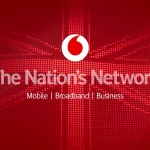Ultrafast Fibre Optic FTTP Broadband Networks Cover 1.1 Million UK Premises
The roll-out of “ultrafast” fibre optic broadband services using Gigabit capable FTTH/P/B technologies is continuing to ramp up in 2017, with our latest annual estimate of total premises passed across the United Kingdom reaching 1,084,500 (up from 780k in 2016) and this is set to surge.
Related Fibre-to-the-Premises (FTTP/H) networks generally transmit their data using a combination of laser light and high capacity optical fibre cable, which is capable of delivering Gigabit class speeds (1Gbps+ or 1000Mbps+ if you prefer) and will easily go many times faster in the future.
Networks like this are preferable to the less reliable electrical signals found inside copper or aluminium metal cables, which are usually significantly slower (Will the Real Fibre Optic Broadband Service Please Stand Up). On the flip side FTTP/H networks also take a lot longer and cost significantly more to roll-out than hybrid fibre services (e.g. FTTC), which mix both fibre with slower twisted pair or coax copper cables.
Advertisement
Some will note that we also include proper Fibre-to-the-Building (FTTB) services into our summary, even though some FTTB installs do have a small piece of high capacity copper Ethernet cable over the last few metres into apartments or offices. However symmetric Gigabit speeds can still easily be achieved, hence their inclusion. The FTTH Council Europe also includes FTTB networks into their ranking.
Current Progress
Each year ISPreview.co.uk collects as much coverage data as possible direct from related FTTP/H/B providers and we then combine it with related information supplied by Point Topic in order to produce a rough overall annual estimate of total premises passed across the United Kingdom (this may possibly include some part-built premises).
Crucially we exclude the more theoretical “addressable market” style coverage claims and only focus on actual deployments (i.e. mostly premises that can order the service today and get it installed fairly quickly for a relatively small setup fee, without requiring significant additional civil works).
Native FTTH/P/B Coverage Estimate (Premises Passed)
2013 = 186,500
2014 = 251,522
2015 = 351,642
2016 = 779,006
2017 = 1,084,500 (c.552,000 from altnets*)NOTE: The real figure is likely to be little higher than this because Virgin Media has yet to declare their FTTP progress and most of the data provided by ISPs is from spring 2017 (networks have grown since then). Meanwhile a small number of tiny FTTH/P providers have not declared any solid coverage, although at this time their impact is not statistically significant.
* The altnets figure in brackets excludes Virgin Media, Openreach, KCOM and WighFibre.
The overall total above includes Openreach, KCOM, Hyperoptic, CityFibre (Bournemouth & York premises passed), Gigaclear, IFNL (GTC / BUUK Group), Fibre Options, ITS Technology, Relish (Keycom buildings), Vision Fibre Media, Community Fibre, Ask4, Call Flow Solutions, Cybermoor, Community Fibre, Grain Connect, B4RN and so forth. Most are actuals, the rest are Point Topic estimates.
Advertisement
We should add that Virgin Media are hoping to build around an extra 2 million premises passed with FTTP (plus 2 million more via HFC EuroDOCSIS Cable) by the end of 2019 under their £3bn Project Lightning scheme. At present there are no public figures for their FTTP-only progress, which might be at least partly due to recent concerns over the roll-out progress (here).
Breaking Down the Key Influencers
The biggest influence on this total continues to be Openreach, which during the spring claimed to have covered 400,000 premises with their FTTP network and they aim to add another 244,000 premises by April 2018. At present the operator’s goal is to reach 2 million premises passed by 2020, although they’re also consulting on a future plan that could in theory push this to 10 million by around 2025 (here); at a cost of £3bn to £6bn (here).
After that we come to Hyperoptic, which recently reported having reached 350,000 premises in big urban buildings via their FTTP/B network. On top of that they’ve raised another £100m to boost the roll-out, with their next stop being 500,000 by the end of 2019 and then they have an “ambitious plan” to cover 2 million urban homes by 2022, followed very hypothetically by 5 million in 2025 (here).
Meanwhile KCOM in Hull and East Yorkshire has pushed FTTP out to 132,500 premises (up from 78,000 last year) and they’re heading for a target of 150,000 by the end of December 2017 (75% of their overall network). A plan to reach the final 25% is likely to surface at some point, although that may involve more of their slower FTTC technology.
Advertisement
The above three account for a whopping 882,500 of the total and the rest are accumulated via a diverse selection of smaller players. For example, Gigaclear has covered about 50,000 premises and they’ve recently secured another private investment of £111m (not to mention lots of state aid supported Broadband Delivery UK contracts), which should bring them to 150,000 rural premises by around 2020.
Elsewhere London ISP Community Fibre have about 10,000 premises and they’ve just raised £11m, which should start them on their way towards a long-term aspiration of reaching 500,000 homes in the city (here). Similarly B4RN has around 3,400 actual connections in rural areas and rising (B4RN covers more premises than this but their community-built approach means they don’t release such a figure).
Most of the other operators are quite small, although we know that Independent Fibre Networks Ltd. (GTC / BUUK) has a fairly wide coverage of new build premises (in the tens of thousands) and recent entrant TrueSpeed has just secured £75m of private investment to help them target up to 75,000 rural premises around South West England (here).
A Note About Cityfibre
Finally, we come to the awkward one, Cityfibre, which is a bit of a dark horse because of their love for using the notoriously hypothetical “addressable market” gauge for coverage instead of “premises passed” (i.e. premises are included even if the fibre is quite a fair way away and would cost a lot of time and money to reach you).
In the above total we’ve only put Cityfibre’s known premises passed figures for Bournemouth and York (each c.20,000), plus a few more for active business or public sector connections. The problem is easy to see because under their “addressable market” gauge they’d already be claiming to “address” some “280,000 businesses and 4 million homes,” when in reality their actual coverage isn’t even close to that.
However in the future this will change because Cityfibre has managed to raise another £200 million (here) and they plan to use this in order to roll-out their 1Gbps FTTP/H network into 5 – 10 large towns and cities from 2018. The first phase is expected to focus on at least 5 of their 50 existing cities, with the ambition of expanding to 10 cities and potentially passing 1 million premises.
Cityfibre suggests that its mid-term target to reach 50 UK towns and cities could conceivably also provide an opportunity to deliver FTTH to “no less than 5 million premises” by 2025, although we’re still awaiting some concrete details. Nevertheless we are expecting Cityfibre to have a noticeable impact, assuming their current plan comes to fruition.
Conclusion
One thing is abundantly clear this year, FTTH/P/B services are finally crawling out of their expensive niche and starting to go mainstream. In particular the recent announcements by Cityfibre, Hyperoptic, TrueSpeed, Gigaclear and Community Fibre show that the UK’s “full fibre” market is gearing up to be very different from previous broadband infrastructure deployments.
In the past the roll-out of new networks was often a two horse race (or maybe more like a gentle paddle) between Openreach (BT) and Virgin Media, albeit mostly focused upon dense urban areas. However in the world of FTTH/P/B we’re seeing alternative network providers that can compete with the big boys (e.g. Hyperoptic).
Meanwhile operator’s like TrueSpeed, Gigaclear and B4RN are showing that such networks can also be built in rural areas, where major national providers would often struggle to achieve the same. The Government is helping to facilitate some of this via an investment of £600m and tax breaks on business rates for new fibre (here).
Exactly how far all of the aforementioned coverage plans will take such networks is still not set in stone, especially as we don’t yet know the outcome of Openreach’s key FTTP consultation. However it seems likely that there will be upwards of 5 million premises passed by 2020 and if that is to be achieved then we’d expect to see a sharp rise in the roll-out pace.
NOTE: Some of the data we have been supplied is confidential and as a result we’ve only summarised those providers where the progress is known.
UPDATE 20th Sept 2017
A comment from Gigaclear follows.
Matthew Hare, CEO of Gigaclear, said:
“ISPreview’s research is encouraging as it shows we are starting to see a rise in demand for full fibre. As more people experience the speed and reliability of full fibre, the demand for an ultrafast network is only going to increase.
However, the infrastructure to support full fibre roll out is still lacking in many parts of the UK, particularly in rural areas. At Gigaclear, we are investing hundreds of millions of pounds into new full fibre networks, but what is needed is a national plan to drive the industry to ensure that everybody has access to future-proofed connectivity that secures our digital economy and enables the UK to compete with the rest of the world.”
Mark is a professional technology writer, IT consultant and computer engineer from Dorset (England), he also founded ISPreview in 1999 and enjoys analysing the latest telecoms and broadband developments. Find me on X (Twitter), Mastodon, Facebook, BlueSky, Threads.net and Linkedin.
« UK ISP Plusnet Sacks Rude Call Centre Worker for Insulting a Customer

















































Comments are closed